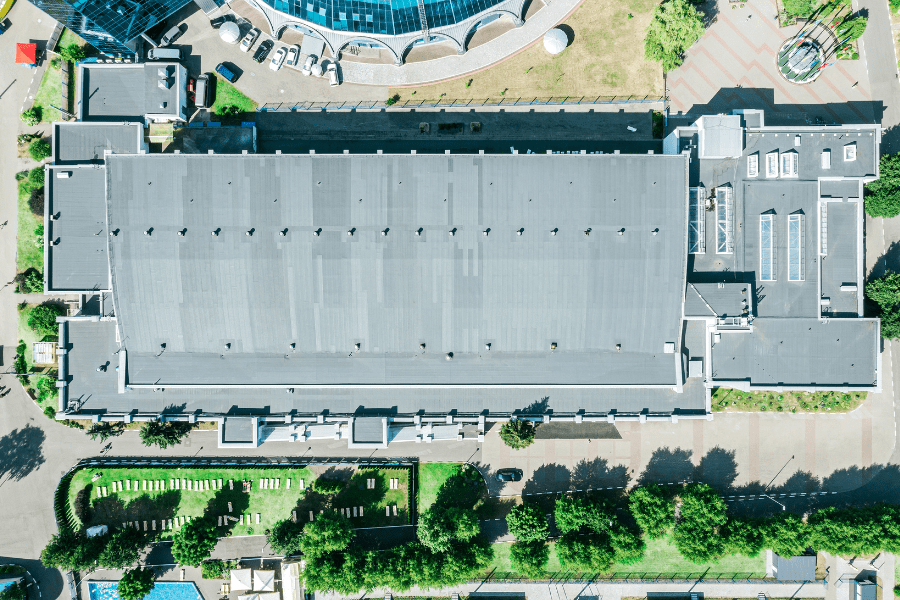
A commercial property’s roof is crucial in preserving the building’s structural integrity and protecting it from weather exposures like wind, hail, and rain. As a roof ages, it becomes weaker and increasingly vulnerable to structural failure. Older roofs are also more prone to coverage exclusions in commercial property insurance policies and could contribute to denied claims when related losses occur.
Structural Issues Related to Roof Age
The average roof lifespan varies based on the materials used, but research shows that structural issues generally become more common in roofs over 20 years old.
- Older roofs are more likely to have:
- Deteriorated or defective materials (e.g., cracks, holes, missing or corroded shingles)
- Moss, mildew, and mold growth
- Sagging, sloping, or rotting areas
- Leaks, moisture accumulation, and drainage issues.
These issues increase the likelihood of older roofs collapsing or experiencing large-scale damage during certain weather events. High winds could rip off weakened shingles, and hail could penetrate and destroy deteriorated materials. Over one-third (34%) of all property insurance claims arise from wind or hail damage, with most involving roof-related losses.
In heavy rain or flooding, older roofs may succumb to excess moisture and cause widespread water damage, particularly concerning buildings in hurricane-prone areas. According to Moody’s RMS, older roofs can contribute 50% more property damage when hurricanes strike.
Coverage Complications Due to Roof Age
Most commercial property insurers either limit or entirely exclude coverage for buildings with roofs over 20 years old based on average roof age data. However, building owners may intentionally provide incorrect roof age data due to outdated documentation, leading to inaccurate risk assessments and skewed premium calculations during underwriting. Verisk estimates that incorrect roof age data costs insurers over $1.3 billion in premium leakage annually.
Building owners with older roofs may temporarily experience reduced premiums by providing inaccurate roof age data, but this strategy will only pay off in the short term. It creates misalignment between owners and insurers, causing increased tension during the claims process. When losses involving older roofs occur, insurers will likely deny associated claims after discovering incorrect roof age data and adjust risk levels and premiums based on updated data, potentially resulting in higher rates or coverage limitations.
Even with accurate roof age data, building owners should know about potential coverage complications with older roofs. Those with actual cash value (ACV) coverage could face considerable out-of-pocket costs if losses require roof replacement, as ACV payouts are based on the roof’s depreciated value and may not cover the full cost of a new roof. Additionally, older roofs may be non-compliant with current building codes, and not all insurers provide coverage for code upgrades required after losses, exacerbating out-of-pocket costs.
Risk Mitigation Strategies for Older Roofs
Given the impact of roof age on commercial property insurance, building owners with older roofs must reduce their risks by:
- Conducting regular maintenance and repairs to prolong roof lifespan and structural integrity.
- Providing accurate documentation, including maintenance schedules, repair records, and age data.
- Ensuring proper coverage, such as replacement cost value policies for older roofs.
By understanding these challenges and implementing mitigation measures, commercial property owners can limit their exposures related to roof age.
If you want to ensure that your commercial property’s roof is well-protected and covered in your insurance policy, contact us at BDI Insurance. Our team of experts can assist you in finding the right insurance coverage for your property. Fill out a request form here and we’ll get back to you as soon as possible.

